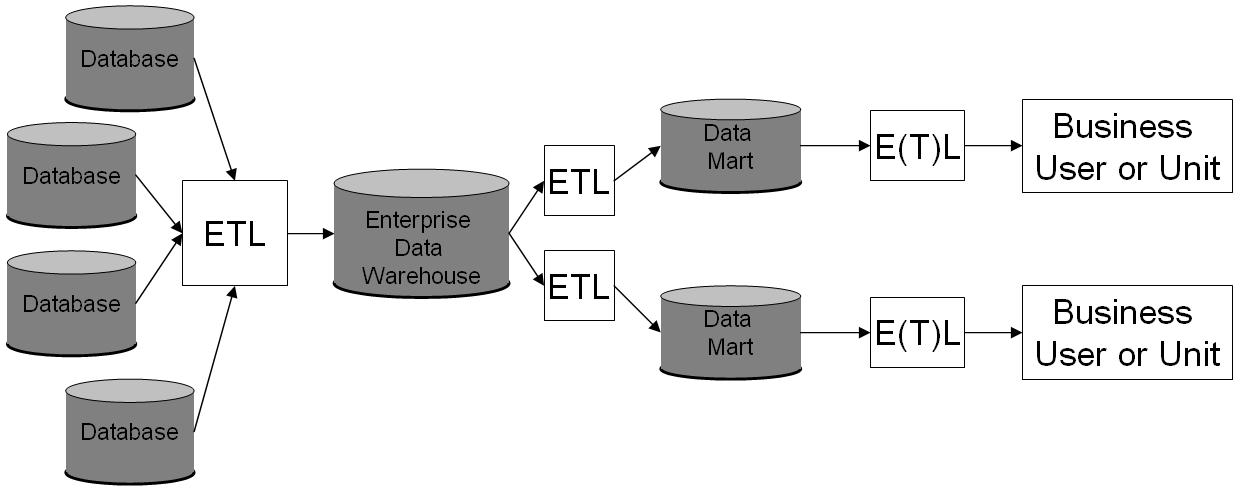|
SAND CDBMS
SAND Nucleus CDBMS is a column-oriented DBMS software system optimized for business intelligence applications, delivering the data warehousing component, developed by SAND Technology Inc. Company history SAND Technology was founded in 1983. SAND CDBMS traces its roots to developments by Nucleus International Corporation research and eventual patent issued to, among others, Edward L. Glaser on “Bit string compressor with boolean operation processing capability.” Originally encoded on firmware, the application is now completely software based. SAND Technology is now a division of N. Harris Computer Corporation. Description A fully tokenized, bit array encoded and compressed database, data storage is column-oriented using domains across schemas/tables rather than as rows of data within tables. This results in an optimized platform for data analytics and data mining, although not suitable for transaction processing. This architecture exhibits the following characteristics: ... [...More Info...] [...Related Items...] OR: [Wikipedia] [Google] [Baidu] |
Column-oriented DBMS
A column-oriented DBMS or columnar DBMS is a database management system (DBMS) that stores data tables by column rather than by row. Benefits include more efficient access to data when only querying a subset of columns (by eliminating the need to read columns that are not relevant), and more options for data compression. However, they are typically less efficient for inserting new data. Practical use of a column store versus a row store differs little in the relational DBMS world. Both columnar and row databases can use traditional database query languages like SQL to load data and perform queries. Both row and columnar databases can become the backbone in a system to serve data for common extract, transform, load (ETL) and tools. Description Background A relational database management system provides data that represents a two-dimensional table of columns and rows. For example, a database might have this table: This simple table includes an employee identifier (EmpId), name f ... [...More Info...] [...Related Items...] OR: [Wikipedia] [Google] [Baidu] |
Business Intelligence
Business intelligence (BI) comprises the strategies and technologies used by enterprises for the data analysis and management of business information. Common functions of business intelligence technologies include reporting, online analytical processing, analytics, dashboard development, data mining, process mining, complex event processing, business performance management, benchmarking, text mining, predictive analytics, and prescriptive analytics. BI tools can handle large amounts of structured and sometimes unstructured data to help identify, develop, and otherwise create new strategic business opportunities. They aim to allow for the easy interpretation of these big data. Identifying new opportunities and implementing an effective strategy based on insights can provide businesses with a competitive market advantage and long-term stability, and help them take strategic decisions. Business intelligence can be used by enterprises to support a wide range of business decisi ... [...More Info...] [...Related Items...] OR: [Wikipedia] [Google] [Baidu] |
Data Warehouse
In computing, a data warehouse (DW or DWH), also known as an enterprise data warehouse (EDW), is a system used for Business reporting, reporting and data analysis and is considered a core component of business intelligence. DWs are central Repository (version control), repositories of integrated data from one or more disparate sources. They store current and historical data in one single place that are used for creating analytical reports for workers throughout the enterprise. The data stored in the warehouse is uploaded from the operational systems (such as marketing or sales). The data may pass through an operational data store and may require data cleansing for additional operations to ensure data quality before it is used in the DW for reporting. Extract, transform, load (ETL) and extract, load, transform (ELT) are the two main approaches used to build a data warehouse system. ETL-based data warehousing The typical extract, transform, load (ETL)-based data warehouse uses ... [...More Info...] [...Related Items...] OR: [Wikipedia] [Google] [Baidu] |
Platform Agnostic
In computing, cross-platform software (also called multi-platform software, platform-agnostic software, or platform-independent software) is computer software that is designed to work in several computing platforms. Some cross-platform software requires a separate build for each platform, but some can be directly run on any platform without special preparation, being written in an interpreted language or compiled to portable bytecode for which the interpreters or run-time packages are common or standard components of all supported platforms. For example, a cross-platform application may run on Microsoft Windows, Linux, and macOS. Cross-platform software may run on many platforms, or as few as two. Some frameworks for cross-platform development are Codename One, Kivy, Qt, Flutter, NativeScript, Xamarin, Phonegap, Ionic, and React Native. Platforms ''Platform'' can refer to the type of processor (CPU) or other hardware on which an operating system (OS) or application runs, ... [...More Info...] [...Related Items...] OR: [Wikipedia] [Google] [Baidu] |
Data Warehousing Products
In the pursuit of knowledge, data (; ) is a collection of discrete values that convey information, describing quantity, quality, fact, statistics, other basic units of meaning, or simply sequences of symbols that may be further interpreted. A datum is an individual value in a collection of data. Data is usually organized into structures such as tables that provide additional context and meaning, and which may themselves be used as data in larger structures. Data may be used as variables in a computational process. Data may represent abstract ideas or concrete measurements. Data is commonly used in scientific research, economics, and in virtually every other form of human organizational activity. Examples of data sets include price indices (such as consumer price index), unemployment rates, literacy rates, and census data. In this context, data represents the raw facts and figures which can be used in such a manner in order to capture the useful information out of it. Dat ... [...More Info...] [...Related Items...] OR: [Wikipedia] [Google] [Baidu] |
